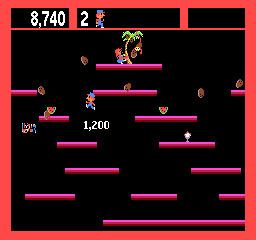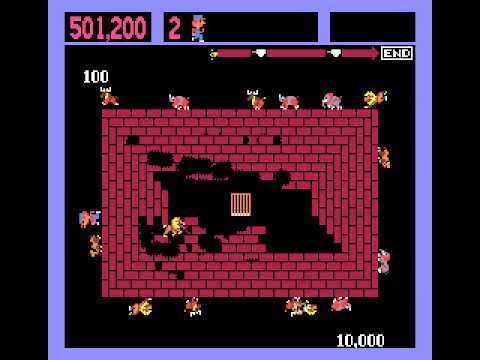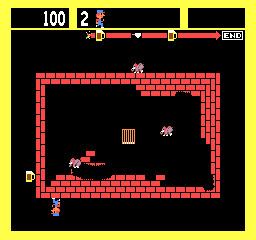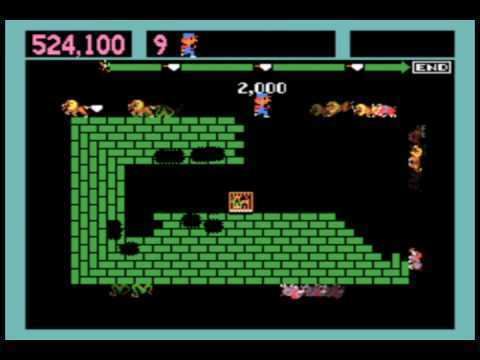Composer(s) Tom Fosha Sound M6802 (@ 921.6 kHz) Publisher Taito Genre Platform game | Cabinet Standard Initial release date 1982 Developer Taito Platform Arcade game | |
 | ||
Designer(s) Keith Egging
John Morgan Mode(s) 1-2 players alternating CPU (2x) M6809E (@ 1.25 MHz) and M68705 (@ 1 MHz) Similar Super QIX, Colony 7, Alpine Ski, Great Swordsman, Lunar Rescue | ||
Zoo Keeper is an arcade game created by Taito America and released in 1982. The player controls Zeke, a zookeeper, attempting to rescue his girlfriend Zelda from a zoo where the animals have escaped from their cages. The majority of the game takes place on a screen where the player builds a wall to keep animals in the zoo—jumping them to avoid contact. Platforming segments are interspersed every few levels.
Contents

Zoo Keeper was available as a conversion kit for Taito's Qix. It was not ported to home systems until 2005, when it was part of the part of the Taito Legends arcade game collection for PlayStation 2, Xbox, and home PCs.

The game's main character, Zeke, would later appear in a family friendly version of Taito's mechanical game Ice Cold Beer called "Zeke's Peak". In this game, Zeke is a mountain climber instead of a zookeeper.

Gameplay

Zoo Keeper has three different types of stages. In the zoo stage, Zeke must run around the edges of the screen to build up the zoo's outer wall and keep the animals from escaping as they try to break through it from inside. Each of these stages is timed, with items appearing periodically that can be picked up for bonus points. One item is always a net; if Zeke picks this up, he can use it for a few seconds to capture animals and put them back in the cage. Multiple nets appear in later zoo stages. When time runs out, the player earns bonus points for every animal that is not outside the wall perimeter. Points are also earned for jumping over animals.
After every second zoo stage, the player enters a stage in which the goal is to maneuver Zeke from the bottom of the screen to a platform at top center, where Zelda is tied to a tree. All platforms except the top one scroll across the screen, some carrying bonus items; the player scores points for moving from one level to another (up or down), grabbing items, and touching Zelda to rescue her. At the same time, a monkey throws down coconuts that bounce among the platforms and must be avoided.
After every platform stage except the first, the player enters a bonus stage with several escalators and a cage in front of each one. Zeke must cross the screen to get to each escalator, jumping over both the animals running toward him and the cage itself. Zelda waits for him at the top of the last escalator; if he reaches her, the player earns an extra life. The first bonus stage has two escalators, the second one has three, and all subsequent bonus stages have four.
If Zeke touches an animal without holding a net, is hit by a coconut, or falls off the bottom edge of the screen, one life is lost and the player must replay the current stage from the beginning. Any built-up walls on the zoo stages will remain in place from one life to the next.
Development
The initial design, from Keith Egging, was for a game about a crab that interacted with eggs and tadpoles that emerged from the eggs. The game evolved based on programmer John Morgan's ideas.
Cancelled Atari 2600 port
In late 1982, Robert Vieira and Chris Omarzu, Two programmers for Atari, were working on a port of this game for the Atari 2600, the game was stated to be 90% complete but was abruptly cancelled for unknown reasons, more than likely due to The North American video game crash of 1983. No prototypes have surfaced; only a cartridge containing Robert Vieria's soundwork and a VHS Cassette from Atari's offices containing character animations.
